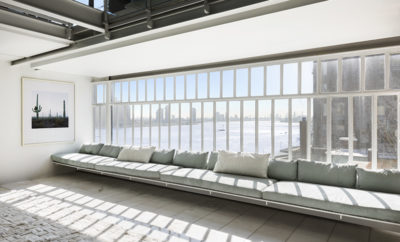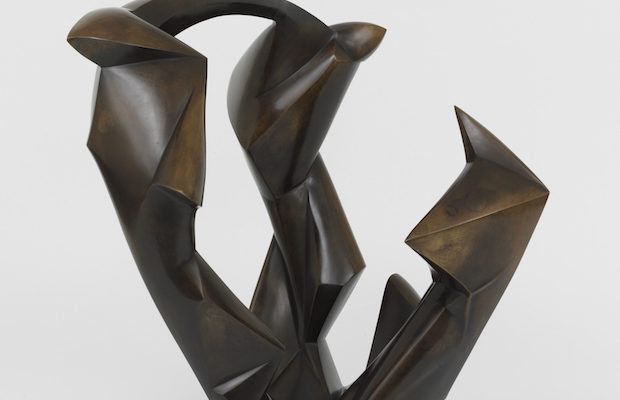 Photo by Annik Wetter, Courtesy Luxembourg & Dayan, New York
Photo by Annik Wetter, Courtesy Luxembourg & Dayan, New York
Architecture
Sculpture as Pure Architecture at Luxembourg & Dayan
In late May, the architect Daniel Libeskind spoke at the New York Gallery Luxembourg & Dayan where he collaborated with Daniella Luxembourg to curate an exhibition of thirteen small sculptural works by some of the giants of early twentieth century sculpture: Alberto Giacometti, Julio González Henri Laurens, Jacques Lipchitz, Henri Matisse, Jean Tinguely, and the less well-known German artist Rudolf Belling. Their intention was to bring together a group of pieces that would demonstrate the tension that arose a century ago between representational renderings of the human form and its abstraction.
“Basically,” Libeskind said, “these fantastic artists opened up the body politic to a different space.” The gallery was jammed with Libeskind followers and the architect charmed his crowd with elegant answers to their questions, including the famous quote from Duchamp: “Architecture is sculpture with plumbing.” He talked about sculpture as pure architecture, pure spatial presentation, and from that vantage point it isn’t hard to see the family resemblance between the stacked vertical construction of Lipschitz’s sculpted bronze Seated Figure and the pure building blocks of a Bauhaus tower.
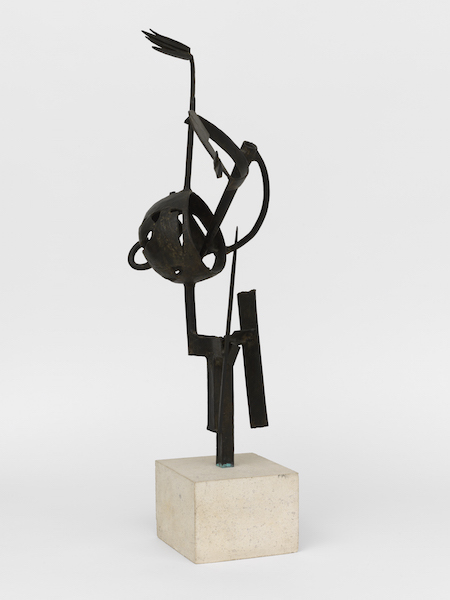
Julio González, Le rêve (Le baiser), 1934, bronze, 25 7⁄8 x 12 5⁄8 x 11 1⁄8 in. (65.5 x 32 x 28 cm). © 2017 Artists Rights Society (ARS), New York. Photo by Annik Wetter, Courtesy Luxembourg & Dayan, New York
One of Libeskind’s early architectural drawings, from the 1983 series he entitled Chamber Works: Architectural Meditations on Themes from Heraclitus, has been reconstructed along the walls of the gallery. The musical staff-like lines run as sight lines in a horizontal continuum, systematically narrowing and then expanding and they produce a rhythm that felicitously corresponds and contrasts to the cubist lines of the sculptures they surround. This is particularly effective with González’s Personnage dit ‘Femme au miroir’ which was conceived c. 1934–35 and cast in 1983 and Le Rêve (Le Baiser), conceived c. 1934 and cast in 1980; both sculptural pieces that whimsically grow out of lines and arcs, constructed with the same free play that you see in the artist’s works on paper.

Julio González, Personnage dit ‘Femme au miroir,’ c. 1934-1935, bronze, 20 1⁄4 x 4 7/8 x 5 1⁄2 in. (51.5 x 12.3 x 14 cm). © 2017 Artists Rights Society (ARS), New York. Photo by Annik Wetter, Courtesy Luxembourg & Dayan, New York
Rudolf Belling’s bronze Dreiklang (Triad), conceived in 1919 and considered the first abstract sculpture made in the German-speaking world, stands alone in its own space on the third floor. Libeskind pointed out that the work powerfully radiates up and out in three directions and its reaching and twisting through space causes it to exist on a different scale from the other sculptures in the exhibit. Dreiklang, which was exhibited in the infamous 1937 Munich Degenerate Art exhibition, makes a perfect link to Libeskind’s masterpiece, the Jewish Museum in Berlin.
Belling was not only a sculptor, but also an architect and designer, who created the sets and costumes for the 1920 film of the Golem. Though he wasn’t Jewish, his wife was and he was forced to leave Germany where many of his pieces were melted down during the war. Dreiklang has the dynamic and muscular energy of the last pieces by Duchamp-Villon and its silhouette undulates and shifts as you walk around the circumference. With its zigzagging forms and openings, it crystallizes almost anything that can be done with shaped volumes in space.
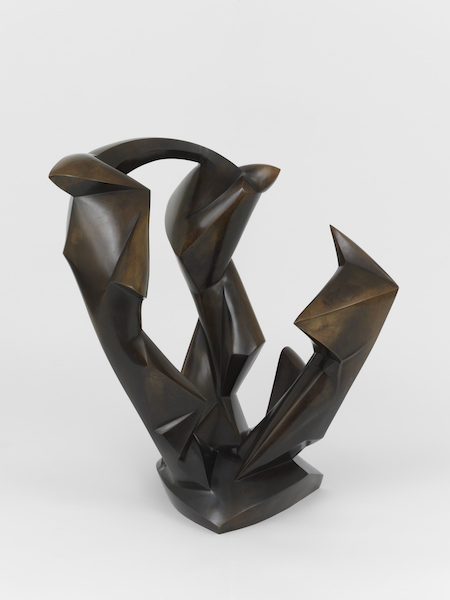
Rudolf Belling, Dreiklang, 1919, bronze, 35 3⁄8 x 33 1⁄2 in. (90 x 85 cm).
© 2017 Artists Rights Society (ARS), New York / VG Bild-Kunst, Bonn. Photo by Annik Wetter,
Courtesy Luxembourg & Dayan, New York
The exhibition was inspired by conversations about abstraction—its causes, meaning and forcefulness—between Libeskind and Luxeumbourg over many years. Libeskind chose to introduce the installation using the last stanza of a poem by Rainer Maria Rilke, “Archaic Torso of Apollo,” in which Rilke meditates on the mutilated stone figure left behind when the gazing eyes, head, arms, thighs and legs of an ancient statue have been broken off from the entire body and the fragmented remains—an abstraction—come to incorporate the once-whole body with a new and ecstatic intensity. The words are printed above the horizontal lines of Libeskind’s drawing: “from all the borders of itself,/burst like a star: for there is no place/that does not see you. You must change your life.” They provide a lyrical framework for the selected sculptural works which demonstrate that credo.
Figures Toward Abstraction: Sculptures 1910 to 1940 in collaboration with Daniel Libeskind runs until July 1 at Luxembourg & Dayan.
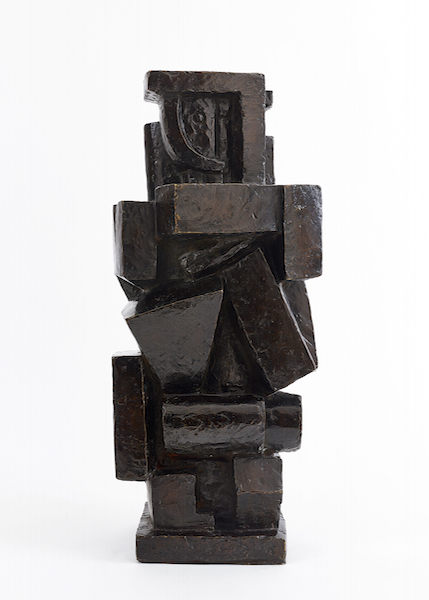
Alberto Giacometti, Figure dite cubiste I, 1926, bronze, 24 7⁄8 x 10 5⁄8 x 9 1⁄4 in. (63.2 x 27 x 23.5 cm). © 2017 Alberto Giacometti Estate/Licensed by VAGA and ARS, New York, NY. Photo by Andrew Romer, Courtesy Luxembourg & Dayan, New York




